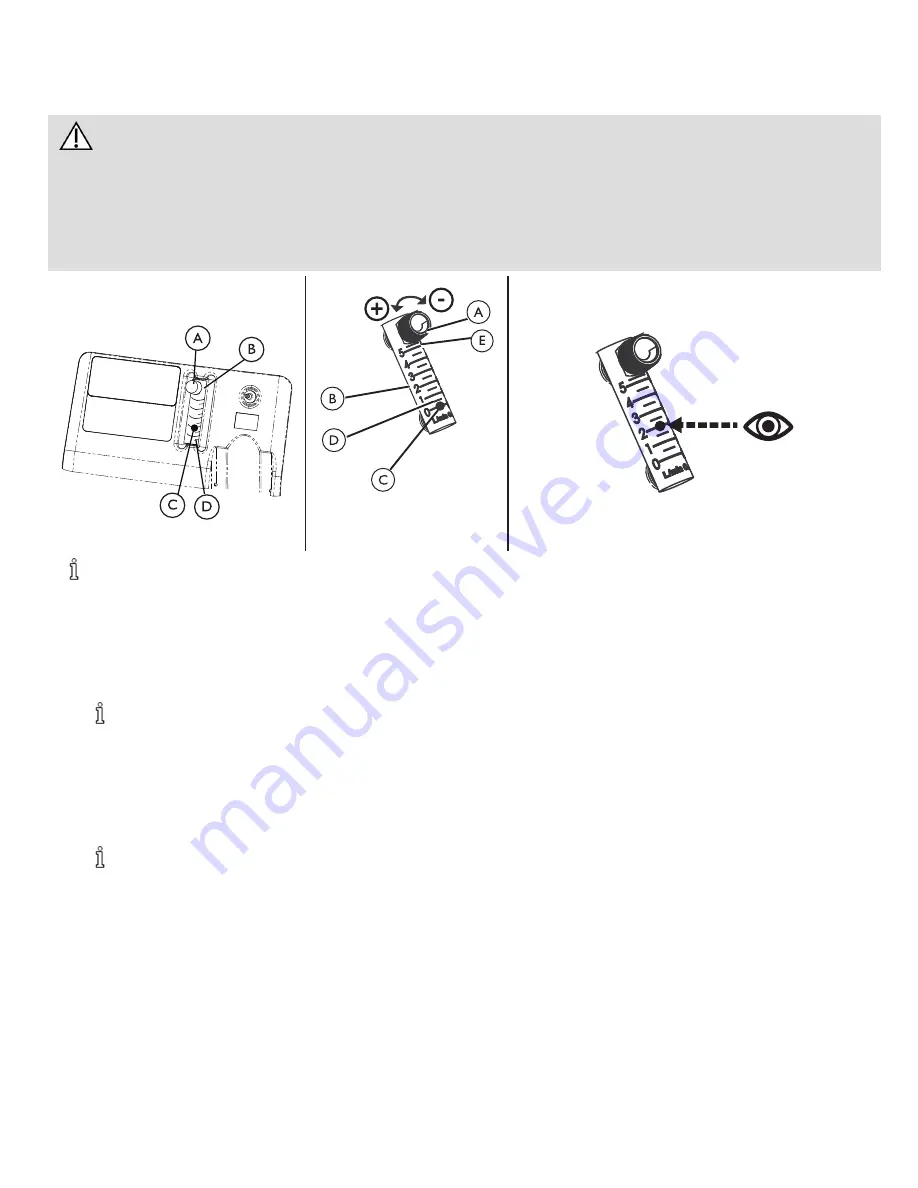
25
60126903-A
5.4.4 Setting the Prescribed Flowrate
Risk of Minor Injury or Discomfort
It is very important to select the prescribed oxygen flow setting. This will ensure you will receive the
therapeutic amount of oxygen according to your medical condition.
-DO NOT increase or decrease the L/min flow setting unless a change has been prescribed by your
physician or therapist.
-The therapeutic effectiveness of the prescribed oxygen flow setting should be periodically reassessed.
-Use only the tubing and accessories that were used to determine the prescribed oxygen flow setting.
Fig. 5-14 Setting the Flow Rate
Fig. 5-15 Setting the
Flowmeter
Fig. 5-16 Example - Setting and reading the flow
rate at 2 L/min
Do not set the flow above the RED line
E
. An oxygen flow greater than 5 L/min will decrease the oxygen
concentration.
1. Turn the flow knob
A
to the setting prescribed by your physician or therapist -
l
CLOCKWISE - Decrease the flow rate.
l
COUNTERCLOCKWISE - Increase the flow rate
To properly set the flowmeter
B
, locate the prescribed flowrate line on the flowmeter. Next, turn the
flow knob until the ball
C
rises to the line. Now, center the ball on the L/min line prescribed.
2. If the flowrate on the flowmeter ever falls below 0.5 L/min
D
for more than one minute, the Potential
Obstruction Alert will be triggered. This is a rapid beeping of the audible alarm. Check your tubing or
accessories for blocked or kinked tubing or a defective humidifier bottle. After flowrate is restored to above
0.5 L/min, the Potential Obstruction Alert will turn off.
A Potential Obstruction Alert indicates a condition that may be associated with a partial or complete
obstruction of oxygen output.
The use of some accessories such as the PreciseR
X
™ pediatric flowmeter and the HomeFill compressor
will deactivate the Potential Obstruction Alert.
5.4.5 Checking the Oxygen Flow Out of the Cannula
Use one of these procedures to check for oxygen flow through the cannula.
Checking with Your Hand
Invacare® Platinum® 5NXG Oxygen Concentrator
















































